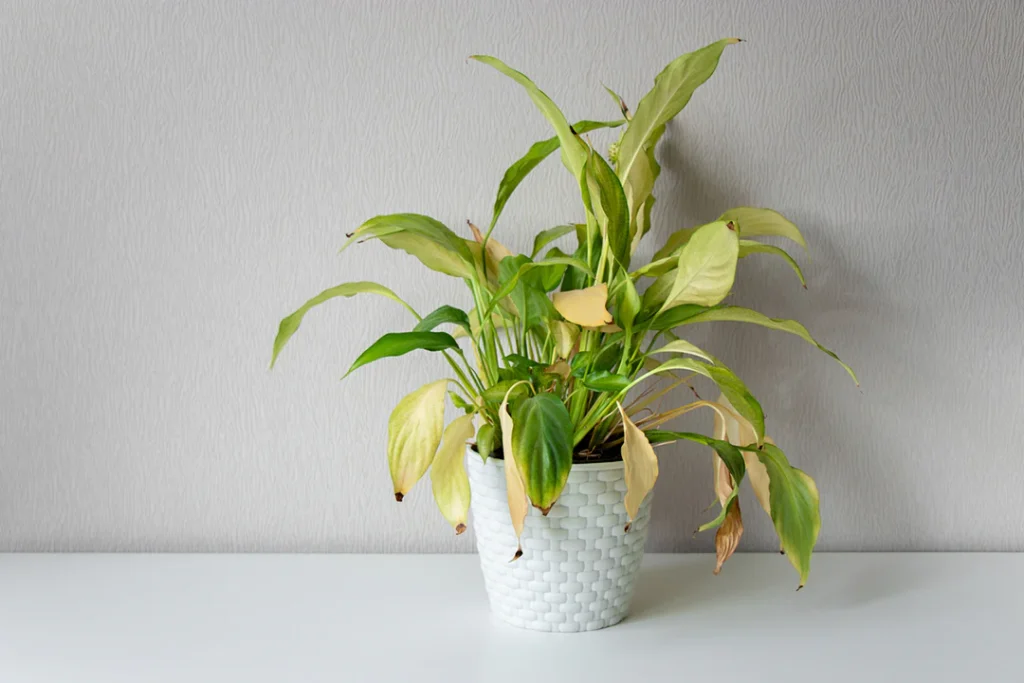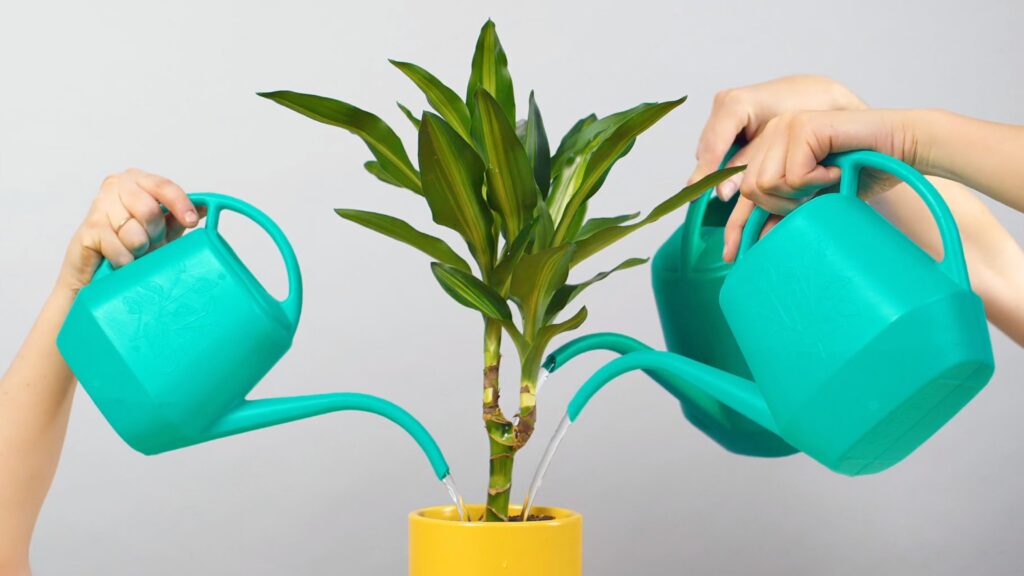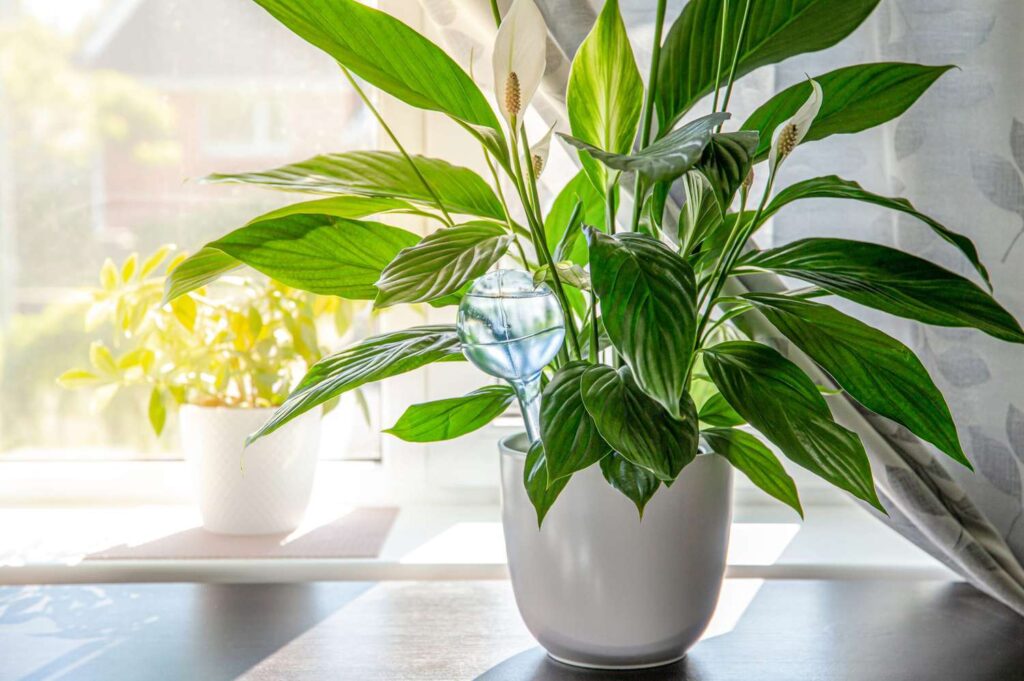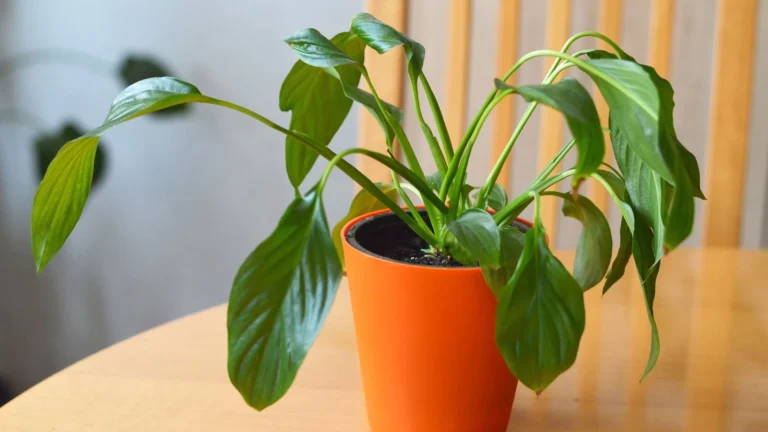Contents
Introduction
Hey there, plant lover! Ever glanced over at your favorite houseplant and found it looking a bit, well, sad and droopy? You’re not alone! Droopy plants are a common issue for both seasoned gardeners and those new to keeping plants. But don’t worry—this is something you can fix!
So, what’s causing your once-perky plant to slump over like it’s had a rough day? There are a few usual suspects behind that droopy look. It could be something as simple as too much or too little water, or it might be struggling with the amount of light it’s getting. Temperature problems and nutrient deficiencies can also play a role. And let’s not forget about pesky pests or sneaky diseases that can cause your plant to lose its luster.
In this guide, we’ll walk you through everything you need to know to get your plant back on its feet. We’ll cover the common causes of droopiness, offer practical solutions, and provide tips on how to keep your plant happy and healthy in the future. With a little care and attention, you can transform that droopy plant into a vibrant, thriving green friend.
Ready to dive in? Let’s get your plant looking its best again!
Understanding Droopy Plants
Alright, so let’s get to the bottom of what’s going on with your droopy plant. First things first: what exactly does a droopy plant look like, and why does it happen?

What Does a Droopy Plant Look Like?
Imagine your plant was standing up straight and proud, but now it’s slouching and looking like it’s just had a bad day. Leaves might be hanging down limply, and the whole plant could seem like it’s lost its pep. Sometimes, it’s not just about drooping; you might also notice leaves turning yellow, wilting, or even dropping off. It’s like your plant’s trying to tell you, “Hey, I need some help here!”
Types of Droopiness
Not all droopiness is created equal. Sometimes, a plant might droop because it’s been overwatered or underwatered, and it can usually bounce back once you address the issue. Other times, if the droopiness has been going on for a while, it might be a sign of something more serious.
Temporary droopiness is often a quick fix. For instance, if your plant has been left out in the hot sun or if it missed a watering, it might just need a little TLC to perk up. On the flip side, if the droopiness is persistent and has been going on for a while, it might be dealing with more complex issues like poor soil, pests, or diseases.
How Droopiness Varies by Plant Species
Just like people have different personalities, plants have different needs and reactions. Some plants are more sensitive to changes in their environment, while others are a bit more resilient. For example, succulents might droop if they’re overwatered, while ferns might show droopiness if they’re not getting enough water. Knowing what your specific plant likes and needs can make a huge difference in keeping it happy and healthy.
Understanding what droopiness looks like and how it varies from plant to plant is the first step in fixing the problem. Stay tuned as we dive into the common causes of droopiness and how you can get your plant back to its thriving self!
Common Causes of Droopiness
So, you’ve spotted the droopiness—now let’s figure out what’s causing it. Plants can get droopy for a bunch of reasons, and each one needs a different fix. Here’s a breakdown of the most common culprits behind a droopy plant and how to tackle them:
Watering Issues
Watering is probably the biggest player in plant health, and it’s super easy to either overdo it or not do it enough.

- Overwatering: Imagine giving your plant too many drinks. It might start to show signs of distress like root rot (yikes!) and yellowing leaves. The soil might feel soggy, and the roots could be sitting in too much water. To fix this, cut back on watering and make sure your plant’s pot has good drainage to let excess water escape.
- Underwatering: On the flip side, if you forget to water your plant, it’s like letting it go thirsty. The soil will be dry, and the leaves might become crispy or curl up. To remedy this, give your plant a good drink and establish a regular watering routine. Just be sure to check that the soil is moist, not waterlogged.
Light Problems
Plants have their own light preferences, and getting the light balance just right can be tricky.

- Too Much Light: If your plant is in a spot that’s too sunny, it might get leaf scorch or bleached spots. This is like sunburn for plants! To help, move your plant to a less direct light spot or use a sheer curtain to filter the sunlight.
- Too Little Light: On the other hand, if your plant isn’t getting enough light, it might grow leggy (long and spindly) and its leaves could turn pale. Think of it like your plant’s not getting enough energy. Try moving it to a brighter spot or adding a grow light if needed.
Temperature Extremes
Just like people, plants don’t like extreme temperatures.
- Too Hot: If your plant is in a room that’s too warm, it might droop and lose leaves. It’s like a heatwave for your plant! Move it to a cooler spot and make sure it’s not too close to heat sources.
- Too Cold: Conversely, if it’s too cold, your plant might get brown leaf edges and slow down its growth. Avoid placing it near drafts or cold windows and keep it in a cozy, warm spot.
Nutrient Deficiencies
Plants need a balanced diet, just like we do. If they’re missing key nutrients, they can start to droop.
- Common Deficiencies: Lack of nutrients like nitrogen, phosphorus, or potassium can cause various issues. You might see yellowing leaves or poor growth. Testing your soil can help you figure out what nutrients are missing, and adding a balanced fertilizer can help restore your plant’s health.
Pests and Diseases
Sometimes, the problem isn’t with the environment but with tiny invaders or diseases.
- Common Pests: Bugs like aphids, spider mites, and scale insects can wreak havoc on your plant. You might notice spots, webs, or sticky residue. Regularly check your plant for pests and treat them with appropriate pest control methods.
- Common Diseases: Plants can also catch diseases, which can cause symptoms like spots, mold, or unusual growth. If you suspect a disease, identify it and use a plant-safe treatment to help your plant recover.
By understanding these common causes of droopiness, you’re one step closer to figuring out what’s going wrong with your plant and how to get it back to its vibrant self. Let’s dive into the solutions and recovery strategies next!
Solutions and Recovery Strategies
Alright, you’ve identified what might be making your plant droopy. Now it’s time to roll up your sleeves and get to work on fixing it! Here’s how you can tackle each problem and help your plant bounce back to its vibrant self.
Immediate Care
When your plant first starts drooping, there are a few quick fixes you can try to get it back on track.
- Assess and Adjust Watering: Start by checking the soil. Stick your finger about an inch into the soil—if it feels dry, it’s time for a drink. If it’s soggy, hold off on watering and let the soil dry out. Adjust your watering routine based on whether your plant prefers dry or moist conditions. Make sure the pot has drainage holes so excess water can escape.
- Light and Temperature Adjustments: Take a look at where your plant is sitting. If it’s too bright or too dim, move it to a better spot. For temperature issues, ensure your plant isn’t in a spot with drafts or direct hot air. A cozy, stable environment will make your plant feel much happier.
Long-Term Plant Care
Once you’ve addressed the immediate issues, it’s time to think about the long haul. Consistent care will keep your plant healthy and prevent future droopiness.
- Soil and Pot Maintenance: Check if your plant needs repotting. If it’s outgrown its pot or the soil is compacted, give it a fresh start with new potting mix. This can help improve drainage and provide the roots with fresh nutrients. Choose a pot that’s slightly larger than the current one to give your plant room to grow.
- Regular Monitoring: Keep an eye on your plant’s condition. Check the soil moisture regularly, watch for signs of pests or diseases, and make sure it’s getting the right amount of light. A little ongoing attention can go a long way in keeping your plant healthy.
When to Seek Professional Help
Sometimes, despite your best efforts, the problem might be more complex. Here’s when you might need to call in the experts:
- Indicators for Professional Help: If your plant’s condition doesn’t improve despite making the right adjustments, or if you’re unsure about the cause of the problem, it might be time to consult a plant professional. This could include a local nursery, a plant doctor, or an arborist.
- How to Consult: When reaching out for help, provide as much detail as possible about your plant’s symptoms and the care it’s been receiving. This will help the expert give you the best advice for your specific situation.
By taking these steps, you’ll be well on your way to reviving your droopy plant and keeping it thriving. Remember, plants are resilient, and with a little care, most can bounce back to their healthy, happy selves!
Preventative Measures
You’ve worked hard to nurse your droopy plant back to health—now let’s make sure it stays that way! Prevention is key to keeping your plant happy and avoiding future droopiness. Here’s how you can give your plant the best chance to thrive and stay in top shape.
Routine Care and Maintenance
Consistency is crucial when it comes to plant care. Setting up a regular routine will help keep your plant healthy and prevent problems from cropping up.
- Watering: Make a schedule for watering your plant based on its needs. Some plants like to dry out between waterings, while others prefer consistently moist soil. Stick to your schedule but always check the soil before watering. Over or under-watering can quickly lead to problems.
- Feeding: Just like people need balanced meals, plants need the right nutrients to grow. Use a balanced fertilizer and follow the instructions for how often to feed your plant. This will help ensure your plant gets the essential nutrients it needs without overloading it.
- Pruning: Regular pruning helps keep your plant looking its best. Remove dead or yellowing leaves and spent flowers to encourage new growth. This also helps improve air circulation around your plant, which can prevent issues like mold and pests.
Choosing the Right Plant
Picking the right plant for your home environment can make all the difference. Here’s how to choose wisely:
- Match the Plant to Your Space: Consider the light conditions, temperature, and humidity of your home. Some plants thrive in bright light, while others prefer low light. Make sure to choose plants that will be comfortable in your home’s environment.
- Research Plant Needs: Before bringing a new plant home, do a bit of research. Understanding the plant’s specific care requirements can help you avoid common pitfalls and keep your plant healthy from the start.
Seasonal Adjustments
Plants have different needs depending on the season. Making adjustments throughout the year can help keep your plant in top shape:
- Winter Care: During the winter, indoor air can be dry and light levels lower. Increase humidity by using a humidifier or placing a water tray near your plant. Adjust watering as needed since many plants need less water in the winter.
- Summer Care: In summer, plants may need more water and might appreciate a bit of shade if the sun is too strong. Keep an eye out for pests that can be more active in warmer weather.
By incorporating these preventative measures into your plant care routine, you’ll help your plant stay healthy and vibrant. It’s all about understanding what your plant needs and providing a little extra TLC to keep it happy. Here’s to many more lush, thriving plants in your home!
Conclusion
Alright, plant enthusiast, let’s wrap things up! We’ve walked through the basics of what makes a plant droopy, how to figure out what’s wrong, and the best ways to get your green buddy back on track. Now, let’s bring it all together.
Summary of Key Points
First off, remember that droopiness isn’t the end of the world for your plant. With a bit of attention, most issues can be resolved. We covered the main causes of droopiness, including watering problems, light and temperature issues, nutrient deficiencies, and pests or diseases. Each of these factors needs a specific solution, so identifying the root of the problem is key to getting your plant back to its happy, upright self.
We also discussed practical solutions and recovery strategies, from immediate fixes like adjusting watering and light levels to long-term care tips like repotting and regular monitoring. Keeping an eye on your plant’s needs and making sure it gets the right care can prevent future droopiness and help your plant thrive.
Encouragement
Remember, every plant is a little different, and sometimes it takes a bit of trial and error to get things just right. Don’t get discouraged if things don’t improve overnight. With patience and the right care, most plants can bounce back and continue to grow beautifully. Think of it as a fun learning experience!
So go ahead and give your droopy plant the love and care it needs. Before you know it, it’ll be standing tall and lush again, bringing a touch of green joy to your space.
Thanks for sticking with us through this guide. Here’s to happy, healthy plants and many more successful green-thumb moments!



